Sadhguru is founder of Isha Yoga Centre. Here we share more about his life and life at the ashram.
When you travel there, you see seven hills on the horizon long before you get close. These are the Velliangiri, the white hills of South India. For Sadhguru, the outline of those hills was a perfect match to an etching imprinted like a birthmark on his retina.
Sadhguru spent much of his youth rambling the roads of South India on his motorcycle. He was searching for the place that would match his very literal “vision.” He was surprised when he learned other people’s vision did not come with such markings. Whenever he could, he looked for their real world form.
Then, one day in 1986, he came around a bend near Coimbatore in Tamil Nadu and gazed upon these hills for the first time. He knew immediately he’d arrived at the source because the imprint on his eyesight vanished. He understood this was the place to fulfill his life’s purpose.
Clarity of purpose
Sadhguru’s enlightenment experience came a few years earlier in 1982. He was 25 years old then. After his attainment, he taught yoga and donated the profits to help others. Only when he hiked to the seventh peak of the Velliangiri mountains did he find the exact place where his own guru and master had left his body.
The Dhyanalinga
His guru entrusted him with the task of creating an energetic meditation form with all the chakras functioning at their peak, a Dhyanalinga. He left behind the knowledge of how it could be achieved stored in the sacred mountains. It took many years, but Sadhguru completed the Dhyanalinga in 1999.
Now, simply being in its presence, anyone can receive energetic benefits and become meditative. In 2017, India bestowed one of its highest civilian honours (Padma vibhushan) on Sadhguru for his contributions and service to his country and for his promotion of spiritual well-being.
The work of Isha
Beyond creating this powerful place for spiritual transformation, Sadhguru works tirelessly for the good of humanity. Nine million Isha volunteers amplify that work worldwide. The organization is completely volunteer run. Much of the work is ecological.
Volunteers planted over 114 million trees in Tamil Nadu through Project Greenhands. Cauvery Calling will see 2.4 billion trees planted to rejuvenate both the Cauvery river basin and famers’ incomes over the next decade.
Isha foundation also works to improve the lives of farmers and rural families with an Action for Rural Rejuvenation program. They provide high-quality education for underprivileged youth through its Isha Vidhya schools.
Isha is now a global movement. There is another consecrated ashram in the United States and centres in many countries around the world.
Visiting Isha Yoga Centre
I first visited Sadhguru and Isha Yoga Centre in Coimbatore in 2015. I went there to attend an Isha Insight business conference. The focus was on developing a leadership style of inclusiveness, insight and compassion. I enjoyed many aspects of that visit but was frankly surprised that the food was outstanding. I was intrigued.
So, Pauli-Ann and I requested a visit to Isha Yoga Center for Faces, Places and Plates. We wanted to take part in the daily life of the ashram and learn more about their food program. We wondered what an enlightened human being eats and what would be on the menu at his ashram.
Arriving
We arrived at Coimbatore airport midday. After an hour on the ring road skirting the city, our driver pulled off the arid windswept plains. Slowly, we passed through small villages interspersed with lush fields of vegetables and patches of banana plants and mango trees.
At Isha, we drove past the main gates and the driver cranked a hard right. We wound through a grove of towering palm trees before pulling into the guest drop zone close to the welcome centre.
After signing in, we got our room key and name tags. Name tags let the attendants at the passageway between the public and private spaces of the ashram know our access status. A volunteer with a golf cart drove us to the tidy rows of two storey stucco cottage dorms.
We opened our door to find a whistle clean room. There was a set of twin beds, a desk, clothing cupboard, luggage racks and a private bath with a shower. Bottled water, mugs, a tea kettle and apple cranberry tea bags added a welcoming touch.
Touring the ashram
The grounds at Isha are dotted with versions of these low rise structures in cool white or soft earthy colours. Tracts of farmland sprawl to the boundary. A jungle of trees sweeps down from the hills. A shed housing indigenous cow breeds is located a short distance from the smooth glass surface of a meditation pond. At the far end of the property, there’s a boarding school and housing for the children and their teacher guardians.
Back at the main public entrance to the property, there are two very prominent building complexes—the Dhyanalinga and the Theerthakunds. The latter are separate rejuvenating water pools for men and women. There’s also a gift shop and a café . Several large spaces for yoga and meditation also stand nearby.
What is an ashram anyway?
Though ashrams have been part of India’s culture for millennia, many Westerners don’t know what they are and how they work. Sadhguru says an ashram is a place to support you when you are ready to walk the spiritual path.
He quips that the only way out (of the recycling that is life) is to journey inward. When the longing to know the divine is great enough, he says, a person will find their guru. A guru acts as a guide on the road less travelled.
Eating Pranic
We were keen to learn what it takes to feed the ashram’s minimum of 3500 people daily. Ironically, we found a lot of answers to our questions at the gift shop.
Sadhguru had just published a book on the subject. It’s called A Taste of Well-Being: Sadhguru’s Insights for your Gastronomics.
We learned that alcohol, stimulants like coffee or tea, meat of any kind, garlic, green chilies and onions are not used in the ashram’s cooking. That’s because in Ayurveda, these substances negatively impact one’s prana, or vital life energy.
If I hadn’t experienced the beauty of the food on my previous visit I would have suspected we’d find nothing but bland mush on our plates. Our food was neither bland nor mushy.
Dinner is served
We went to the dining hall that evening with our hosts, two Maas (the title Maa signifies a female monk who has voluntarily given up their worldly life; men that do the same are called Swami). Long grass mats spread the length of the place.
People quietly found a place behind banana leaves strategically spaced the length. We joined them. There was silence before everyone joined in an invocation blessing. Then, there was more silence. That is, except for the moving of feet and the clanging of metal utensils as volunteers served food from buckets.
The meal
The servers each offered a vegetarian specialty. We drank a glass of a warm wheat “coffee.” Chutneys complimented rice, dal with cooked kuzhambu (a typical vegetable-based gravy of Tamil Nadu), a sprouted grain salad and fresh vegetables. Long wedges of fresh papaya and a sweet fudge-like treat completed the meal. The volunteers offered seconds to all. A raised hand signalled satiety.
Silence, we learned, is maintained in the dining hall to honour the life forms eaten. The fact that this food will sustain your human life and become part of your body is held in awe.
Everyone eats with their hands. This is another way of recognizing and enjoying our interconnected oneness with the food. The five fingers of your hand represent the five elements you are made of. Again, it’s about realizing our oneness.
When full, people folded their compostable banana leaves and picked up their stainless steel glass to wash in the sinks at the back of the dining hall. We went to bed that night full and satisfied but somehow light and alive as well.
Early morning at the ashram
The next morning we elected to start our day with the kitchen staff. That meant we were back in the dining hall at four-thirty a.m. for Guru Pooja (a subtle process to invite the Divine into your life).
Pots were already clattering in the Akshaya (kitchen) across the lane. But, in the now dark dining hall, we joined a few dozen seekers around the flickering lamp light surrounding a portrait of Sadhguru on a mantle.
Though the photo was there, and the man is genuinely loved by his followers, the process of the pooja is not directed strictly at Sadhgure and Isha Yoga Centre. Instead, it is about the possibility he and all the great masters of the yogic tradition represent as ones who lead on the path to the divine.
Not really knowing the protocol, we followed along as best we could. When the final bell rang, people left to continue their yoga practices and go about their daily activity. We went back to our room to grab a bit more rest. We had an invitation to visit the mighty kitchen that fuels this place later that morning.
A day in the Akshaya (kitchen)
If you picture a warehouse the size of a North American “big box” store, you’ve got an idea of the size of kitchen it takes to feed Isha’s residents, volunteers and visitors. With a team of 105, the kitchen can feed up to 100,000 people per day during special festivals and events.
One of the Swamis in charge spent four years cooking in the United States. He ran banquets in the posh hotels of New York City and San Francisco. He shared that everything here is made from scratch from old Tamil recipes and remedies.
In one part of the kitchen, a line of 18 enormous soup kettles banked one wall. The kettle crew were making a South Indian favourite – Sambhar Sadham – a vegetable and lentil stew with rice.
We watched as they added five to 10 gallon buckets of carefully chopped vegetables to the vats. Swami led us to the back of the facility to meet the vegetable prep team. At the bakery, we watched as dozens of rounds of coconut bread were whipped from the ovens by a baker who was simultaneously cutting cinnamon buns from the longest rolls of dough we’ve ever seen.
In another area, a young cook made a coconut and rice flour dough from scratch. Finished with the preliminaries, he rolled the barrel over to a huge contraption across the room.
He fed the dough in the top and suddenly long strings of it twirled into nests on flat metal trays below. These are known as Idiyapam or string hoppers. They are always a treat. Though we’d eaten them, we never appreciated what was involved in making them.
In still another corner of the kitchen, a team of four men made deep fried gulab juman (sweet dough balls in syrup). The men smiled, waved and seemed incredibly jovial.
Jolly cooks
In fact, everyone in the whole darn place – from the workers unloading a massive shipment of fresh pineapples at the loading dock to the guy grating coconut after coconut – seemed deeply content. They did their work but always smiled and bowed Namaskaram with hands together.
Our host Swami told us that they feel honoured with their role of cooking for everyone here. They eat well and stop each morning after brunch has been served to practice yoga as a group. The food, it appears, is made with love as well as from scratch.
Recipe wrap up
Back in our room, we leafed excitedly through our new cookbook purchase to see if we could find the recipes we enjoyed at dinner. They weren’t there.
When we asked, one of the Maas assured us that the Swami from the kitchen would be happy to share them with us. We thought about his workload and groaned to add to it.
We need not have worried. The recipes arrived by email shortly after. We’ve tested and revised them with the help of the team at Isha.
May they increase your feelings of life and health as they are intended to. You’ll find the recipes for Sambhar Sadham, Green Gram Sprout Salad, Coconut Mango Crisp, Coconut Buns and Sukku Coffee in the posts that follow.
Gratitude
We wish to express our deep gratitude for the grace of Sadhguru and the loving care of all the volunteers who made our stay at Isha Foundation in Coimbatore so completely wonderful. This post was fact-checked by the Isha English language publications team. All photos, other than those taken by Pauli-Ann Carriere on our visit, were supplied by Isha and are used with permission.
Thank you to the Kerala Travel Mart and Travel XS for sponsoring our travel throughout South India in 2016.

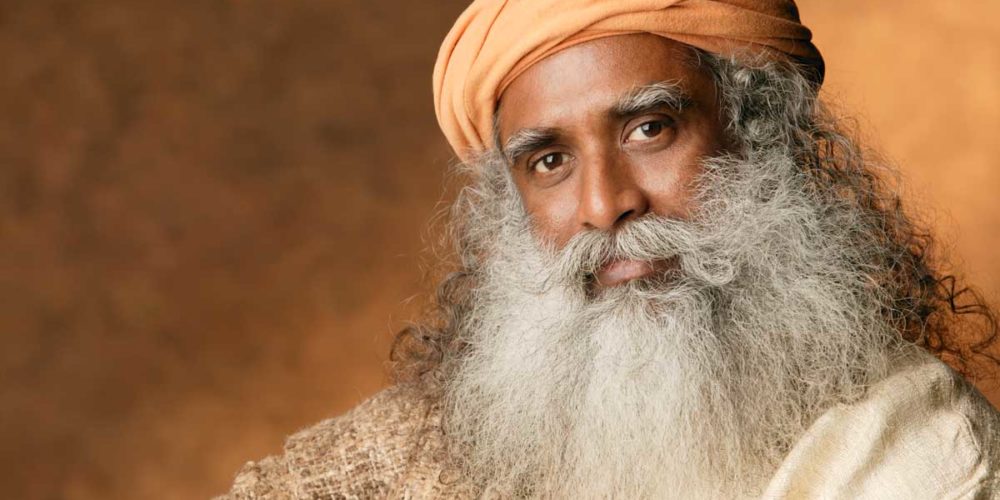
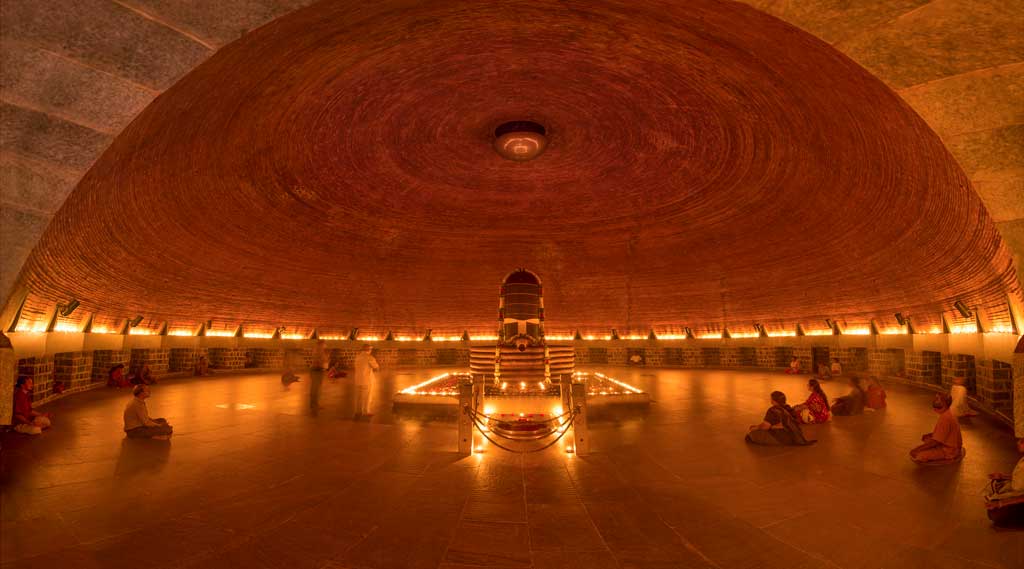
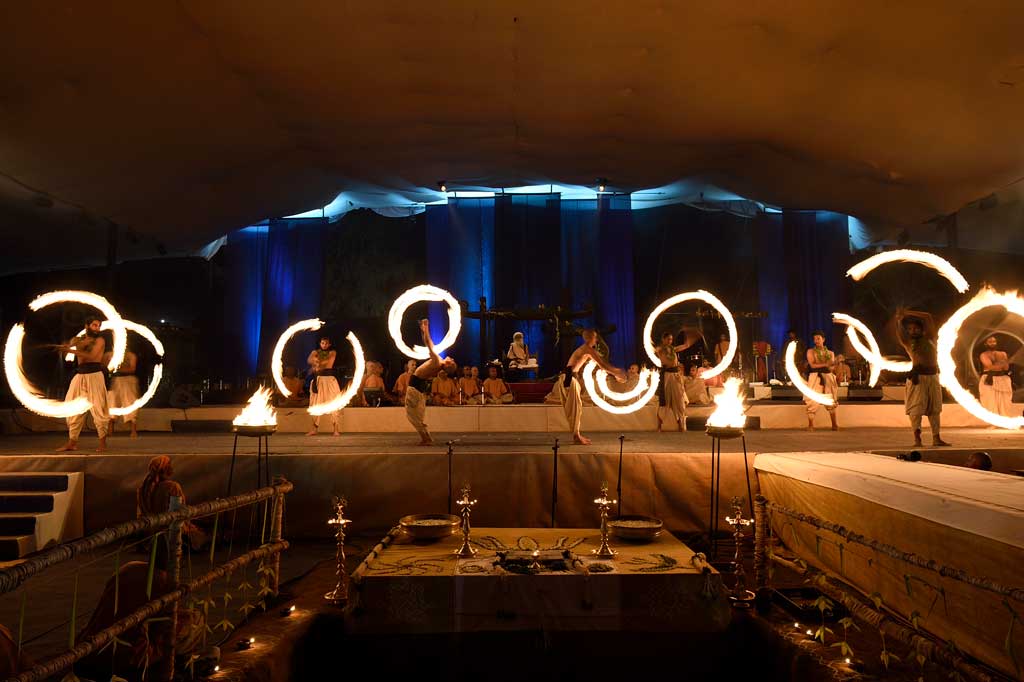
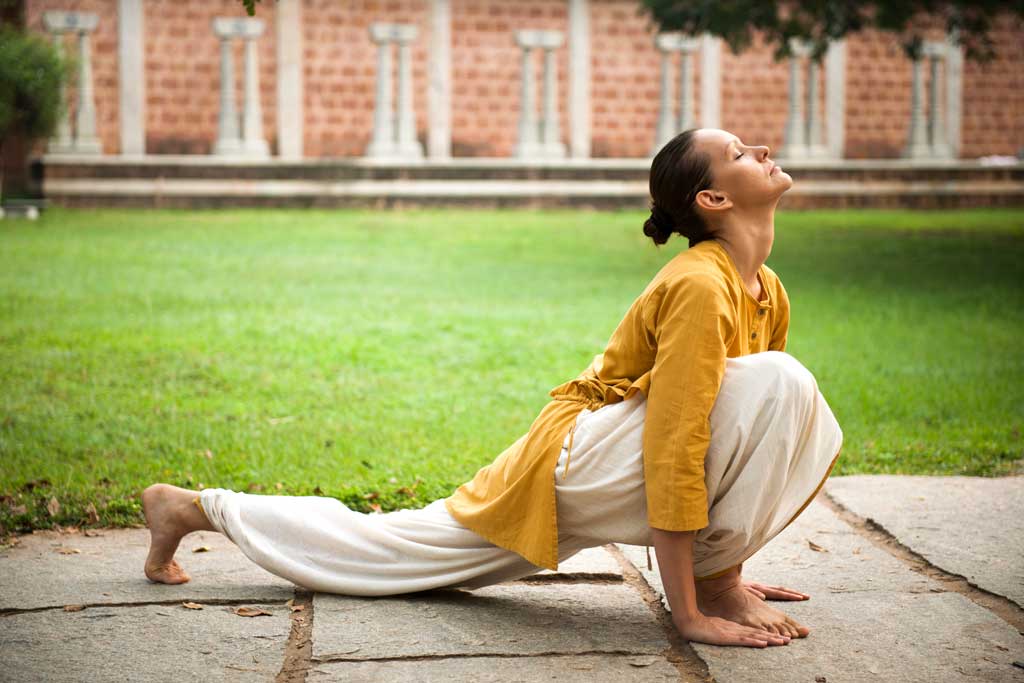
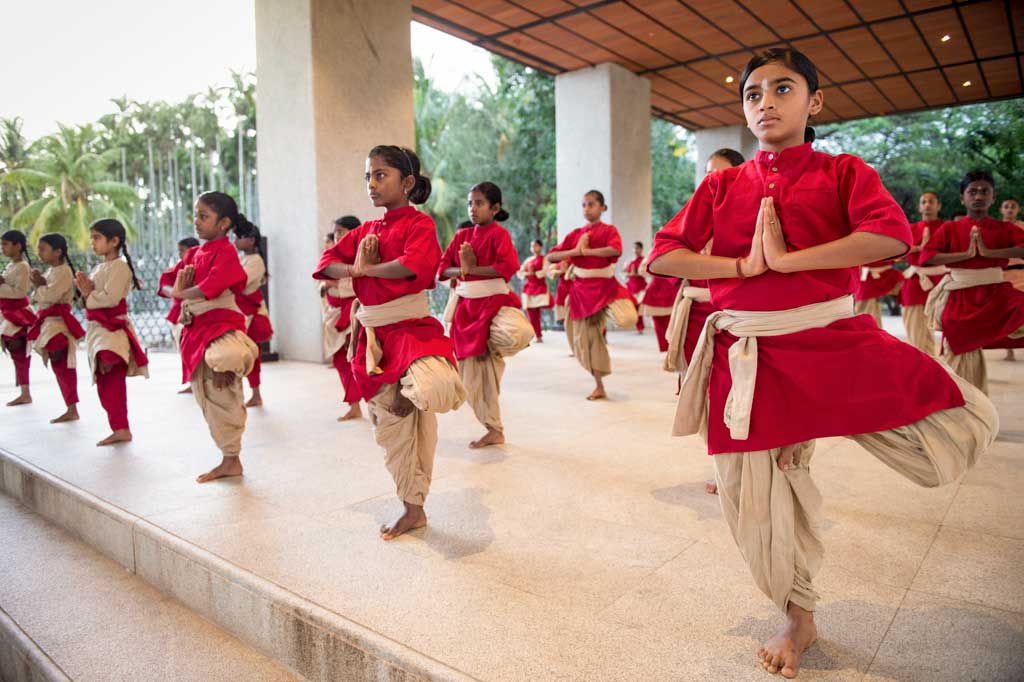
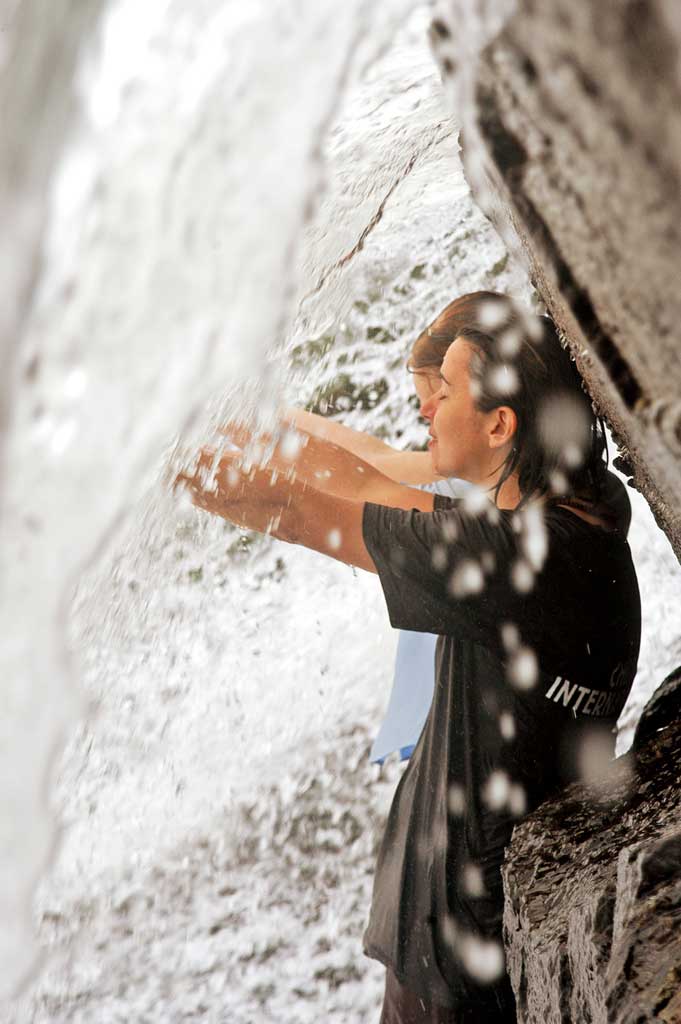
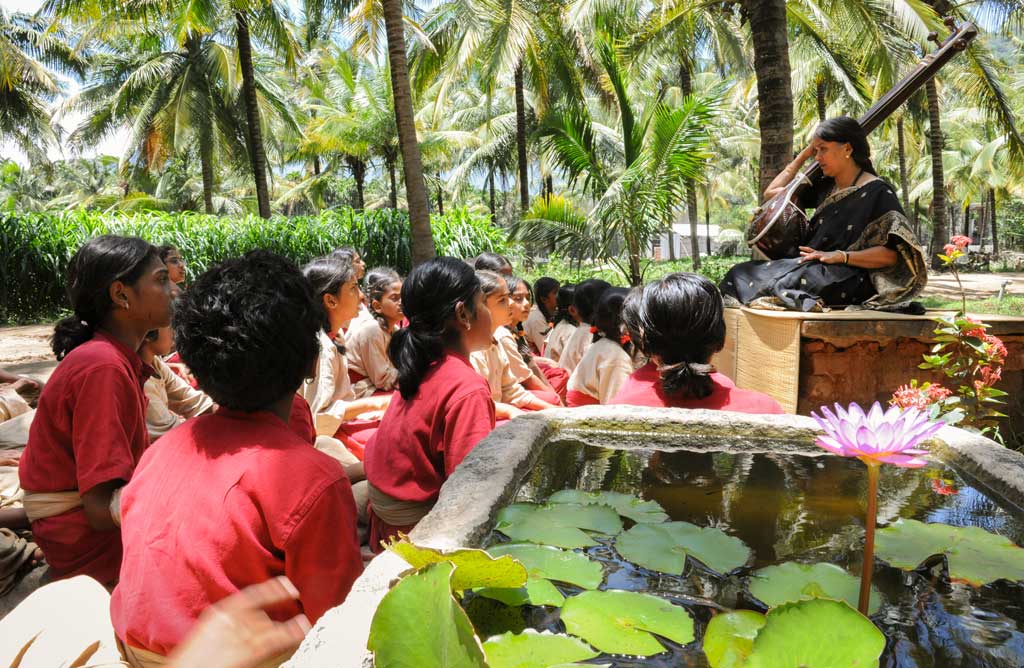
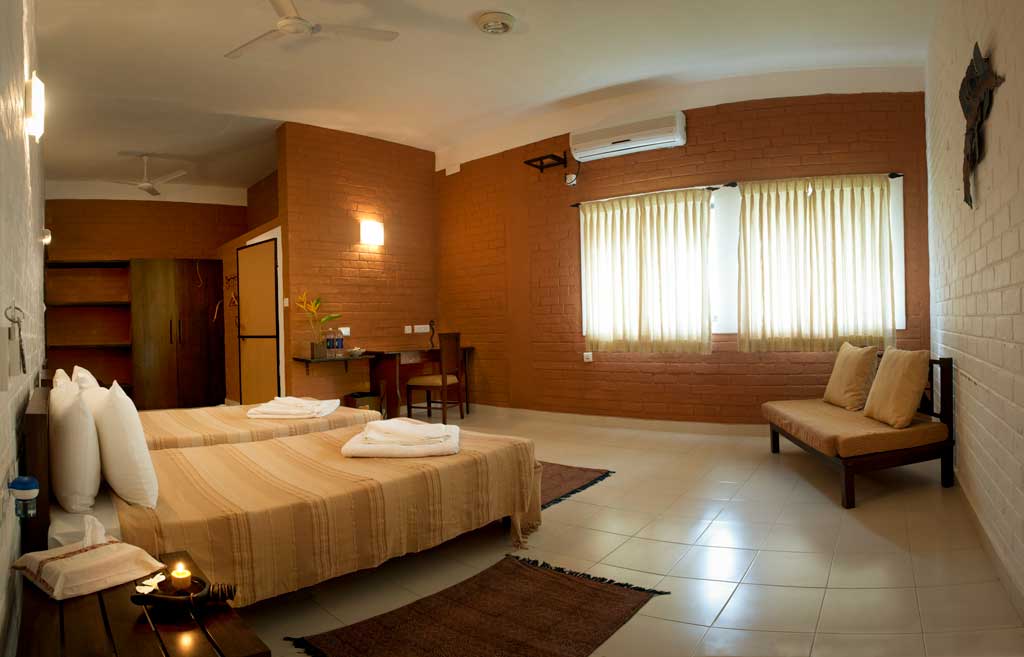
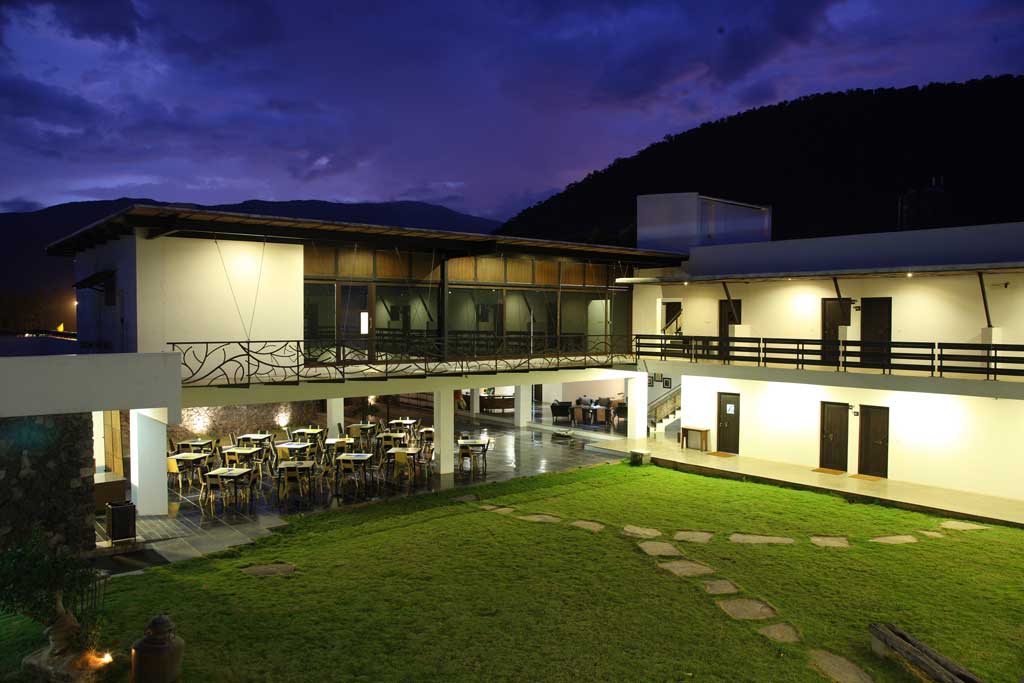
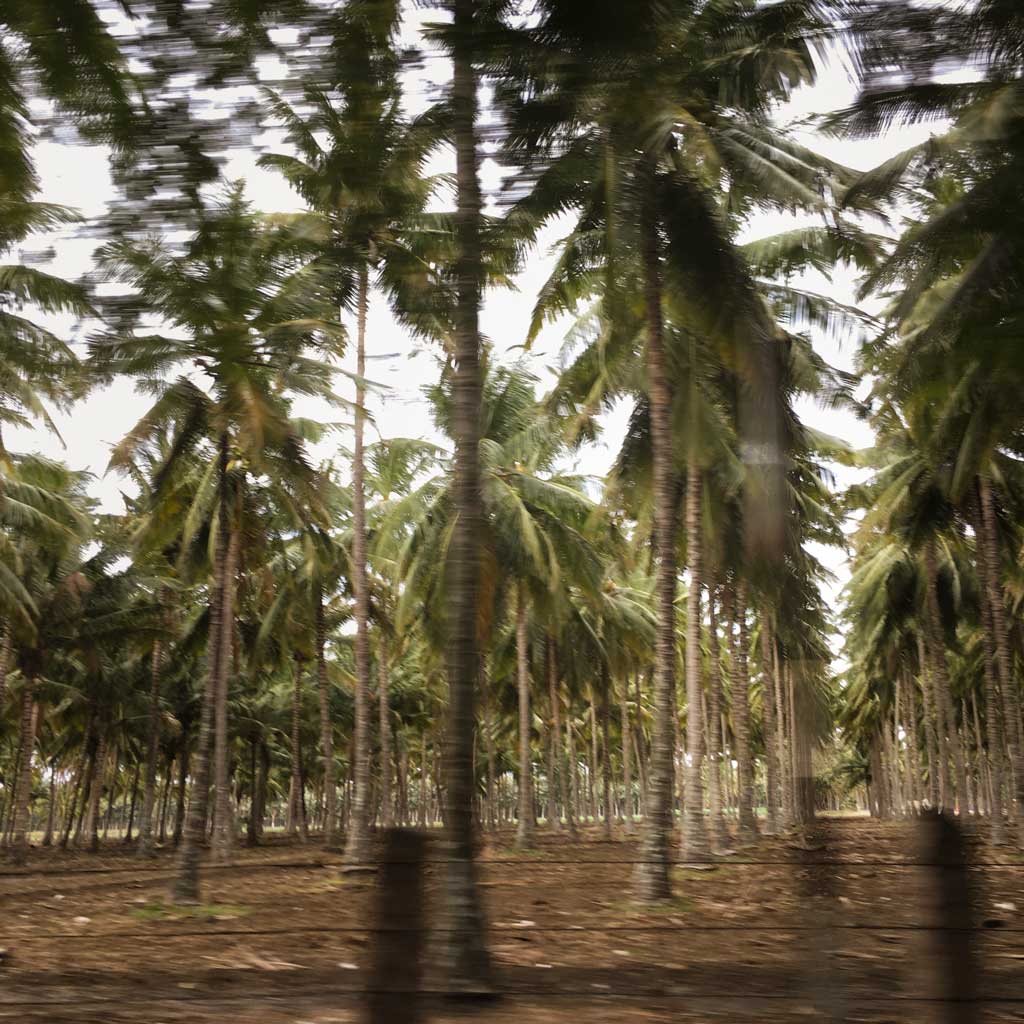
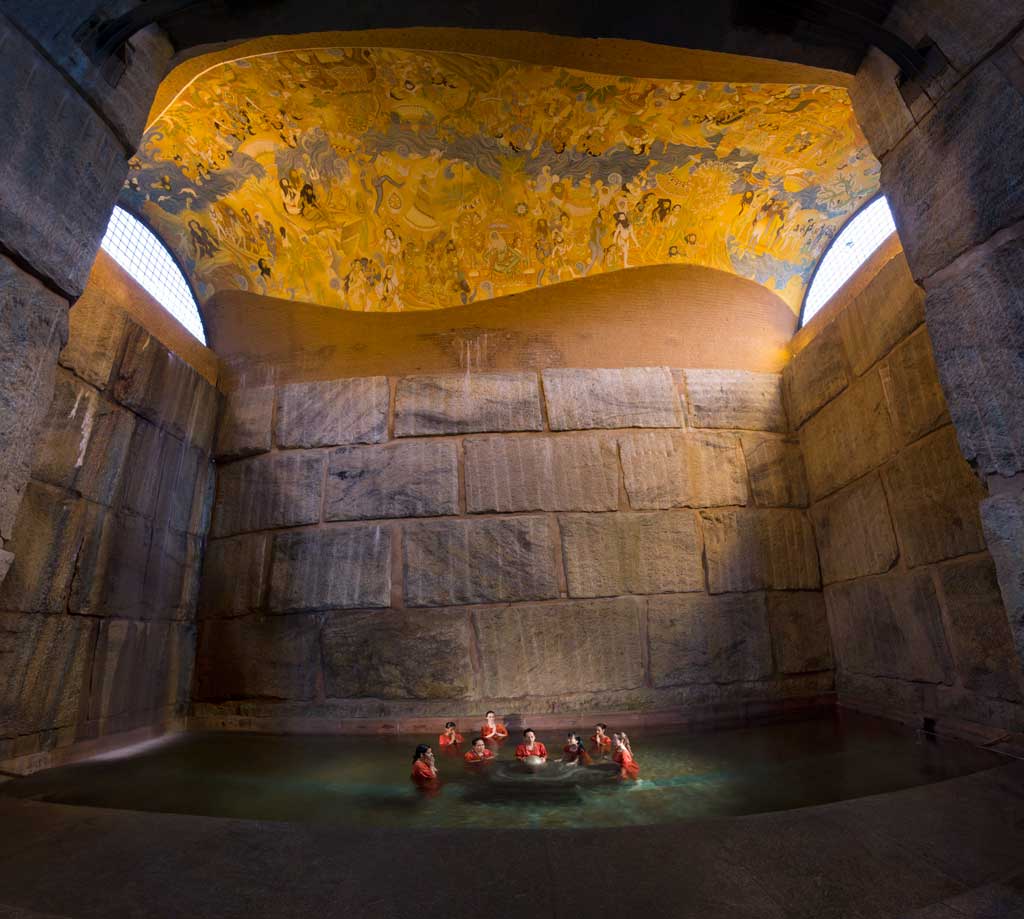
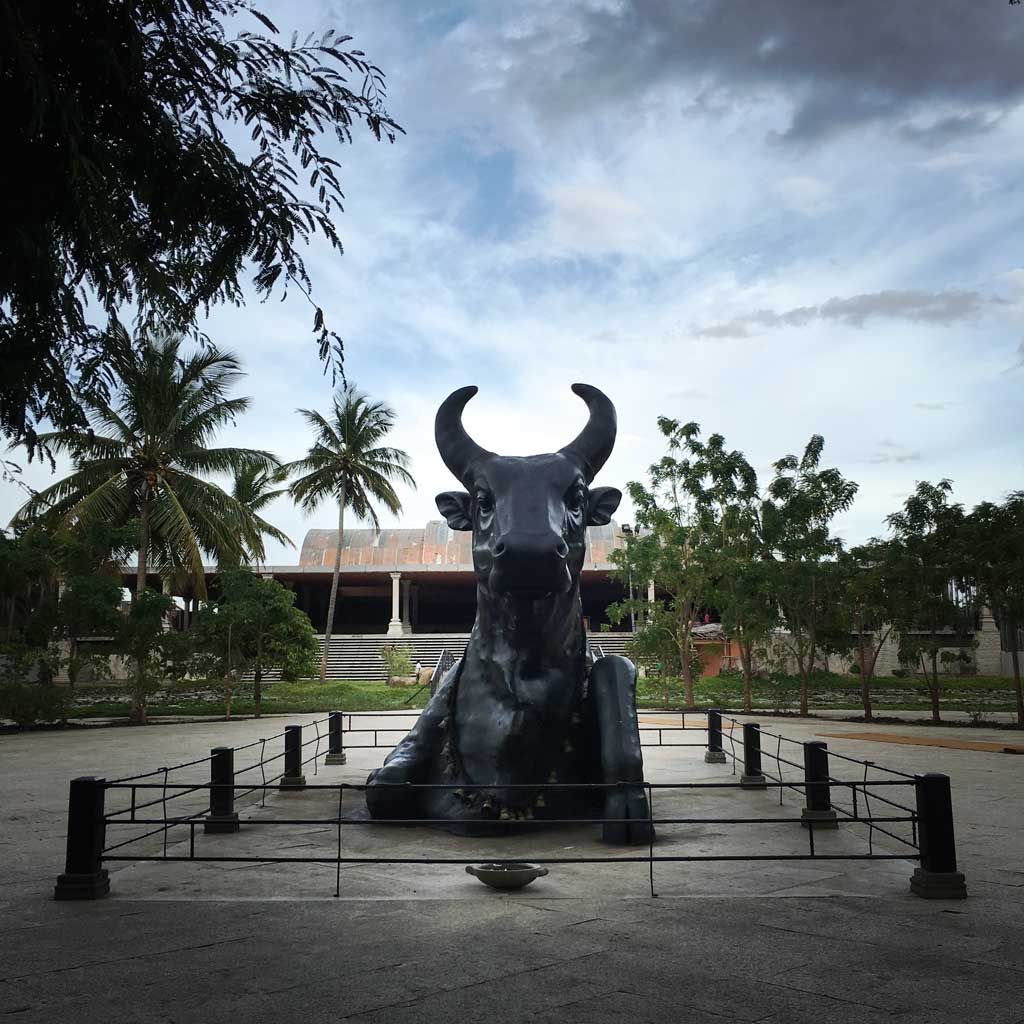
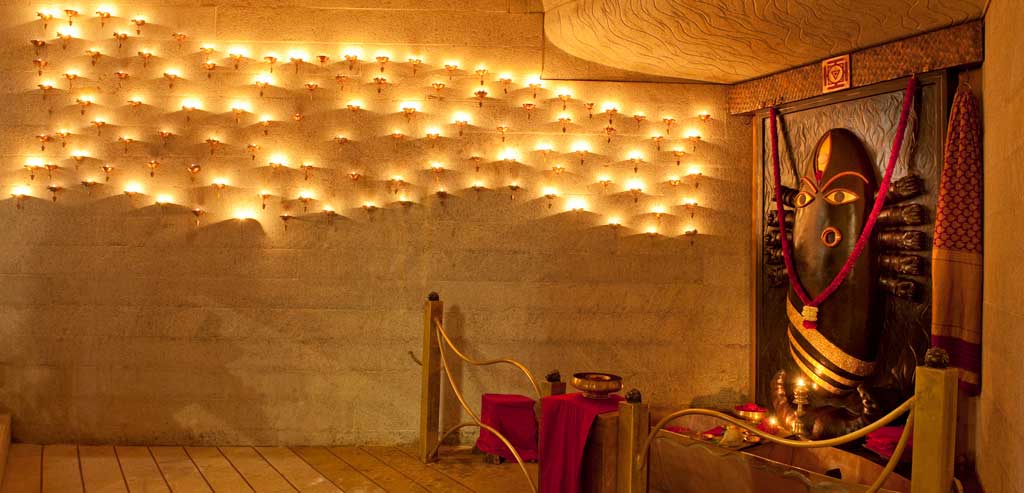
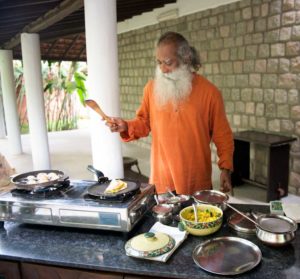
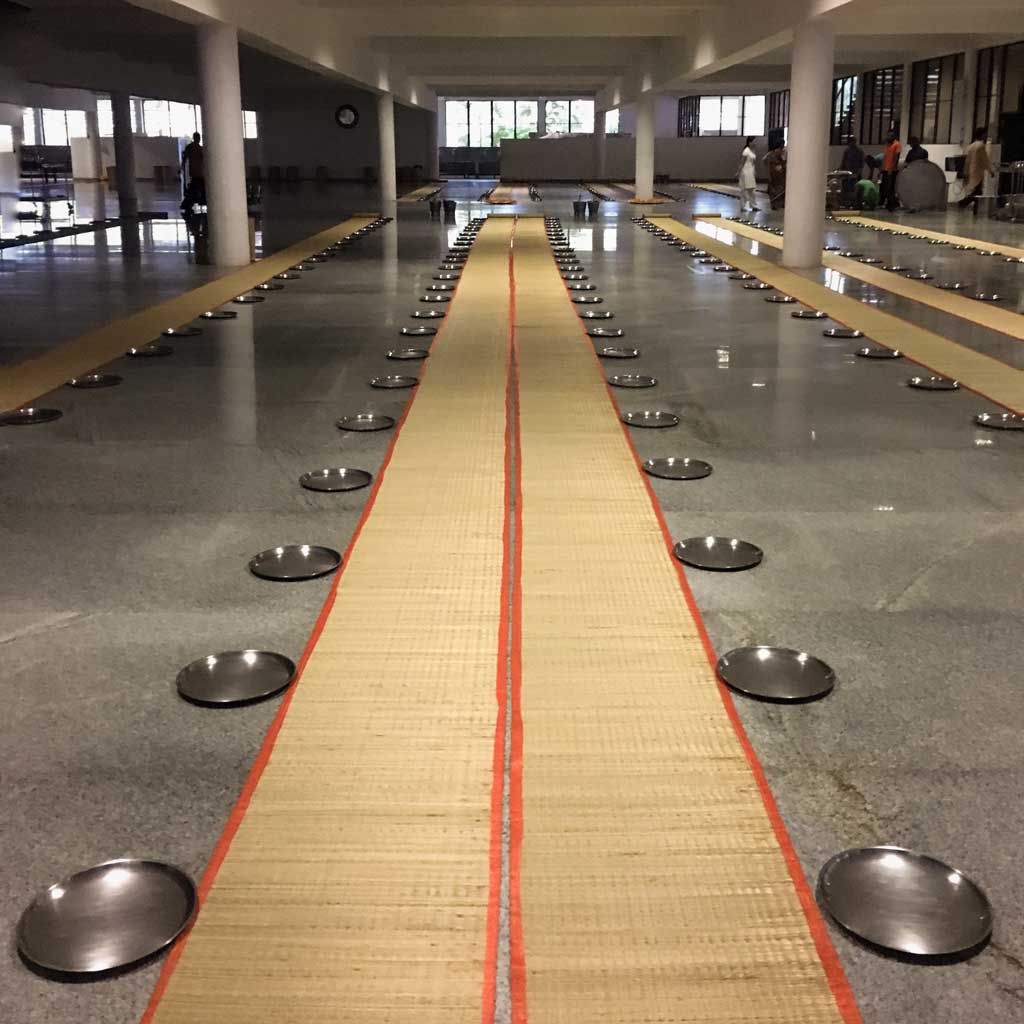
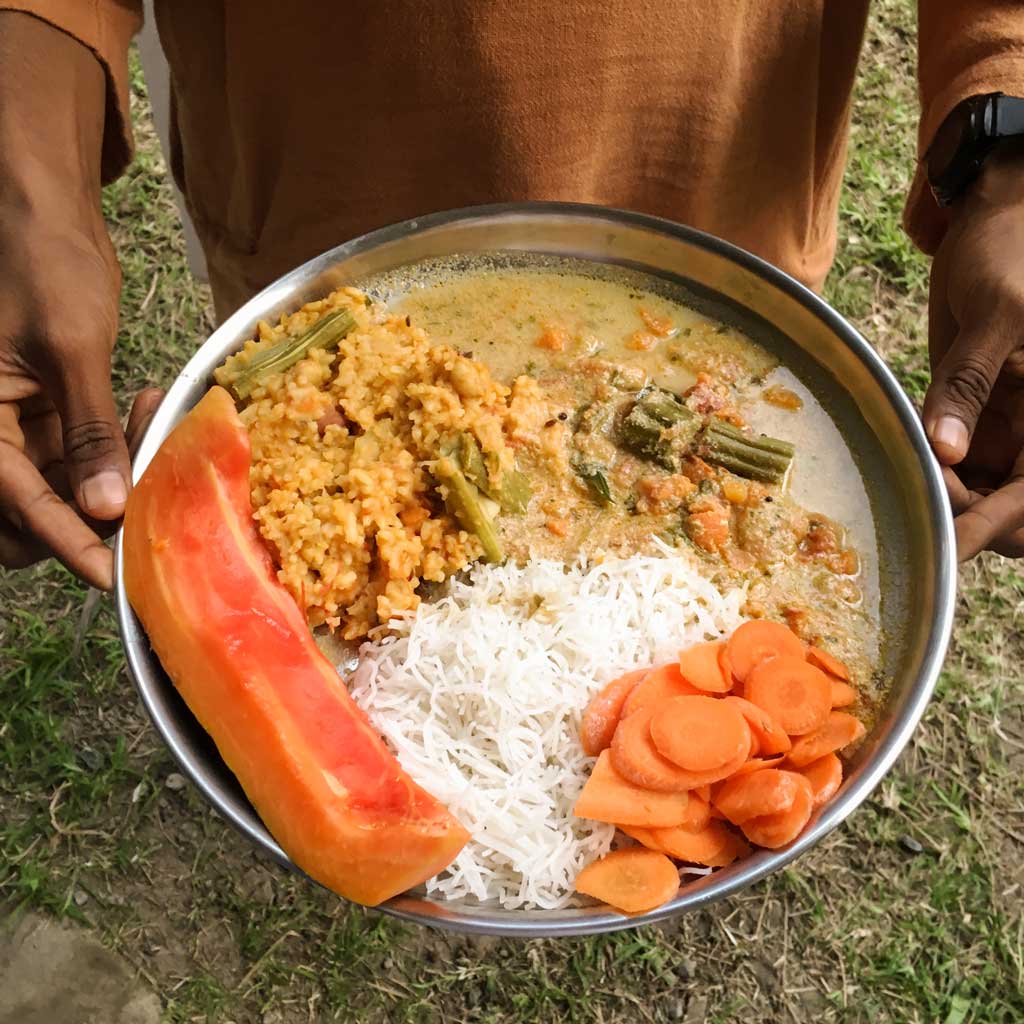
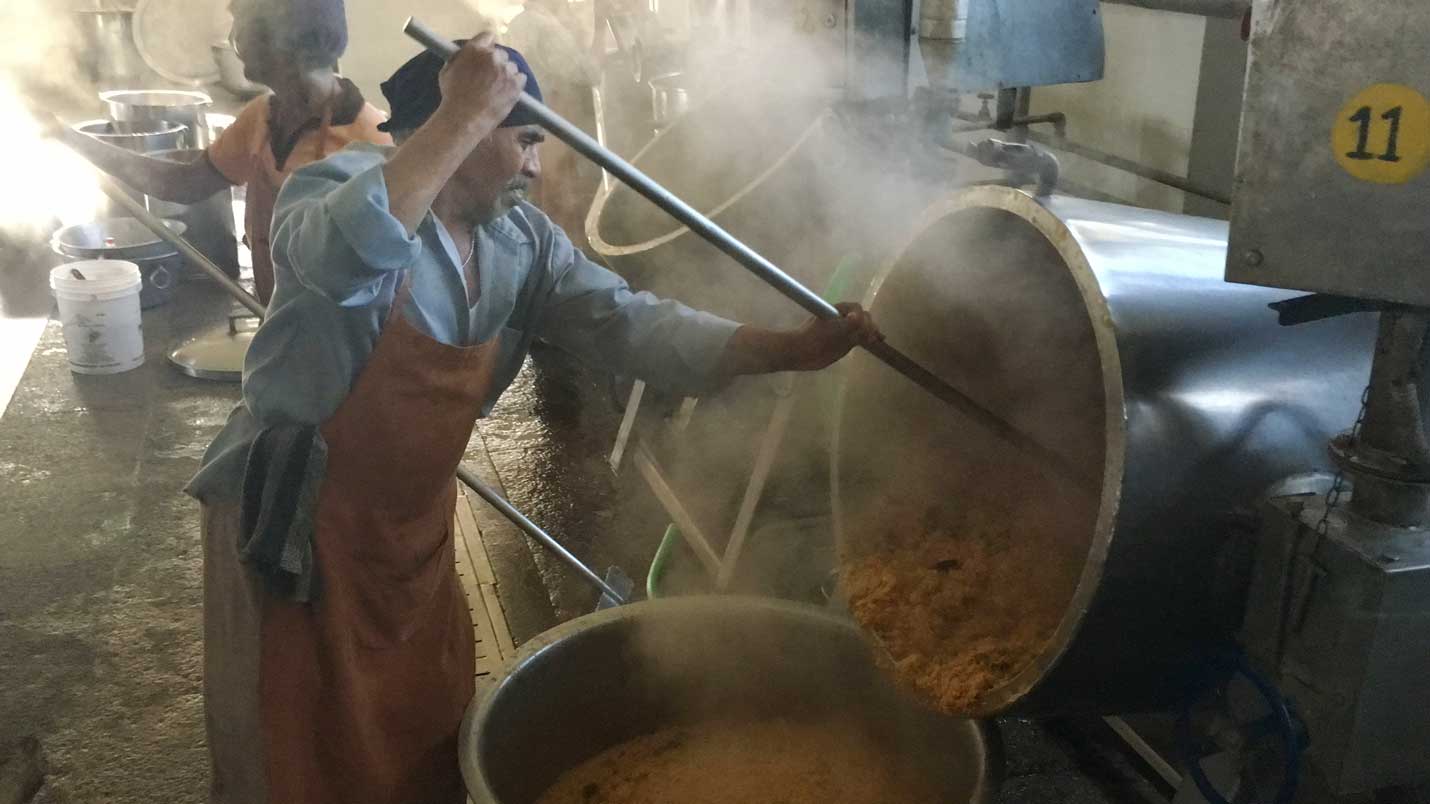
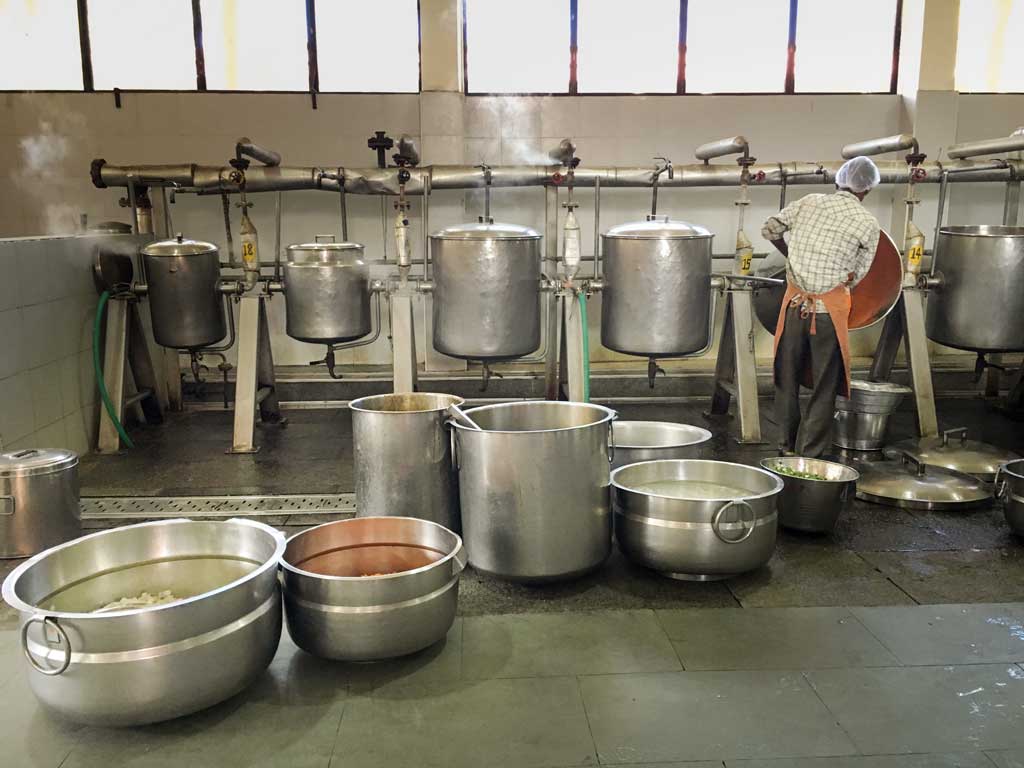
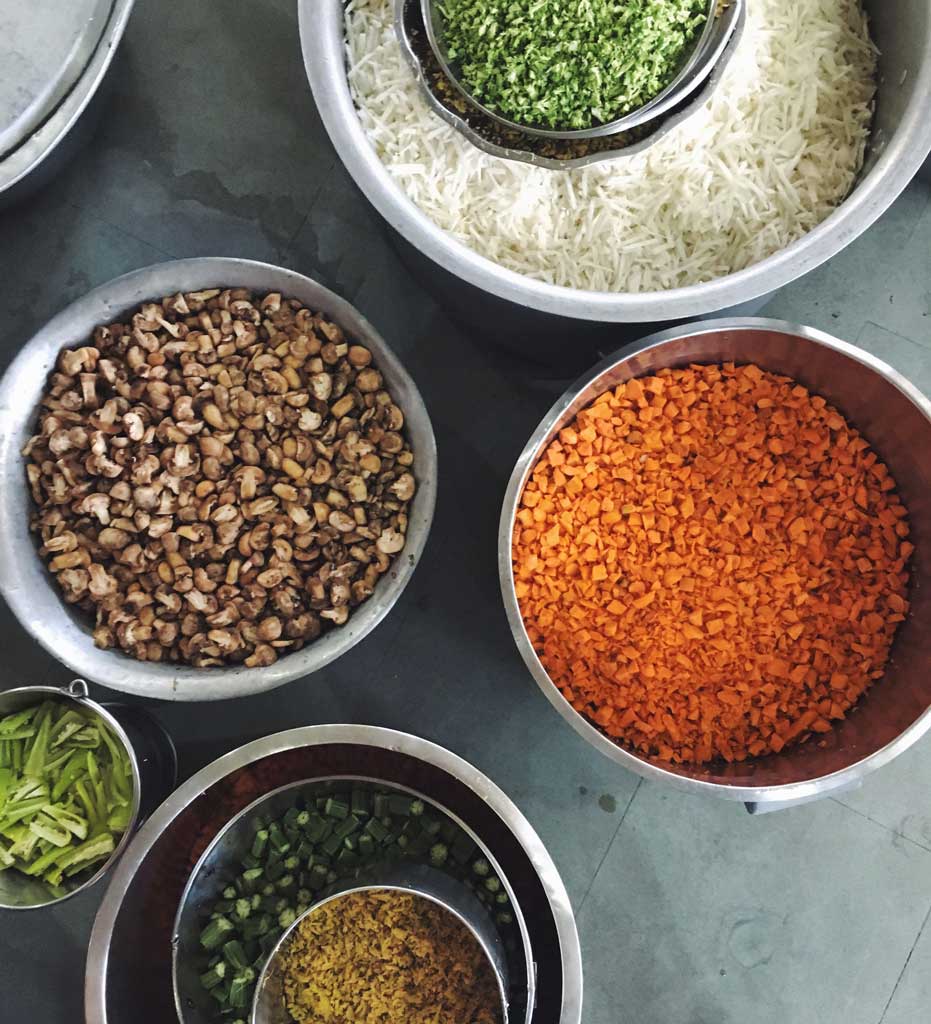
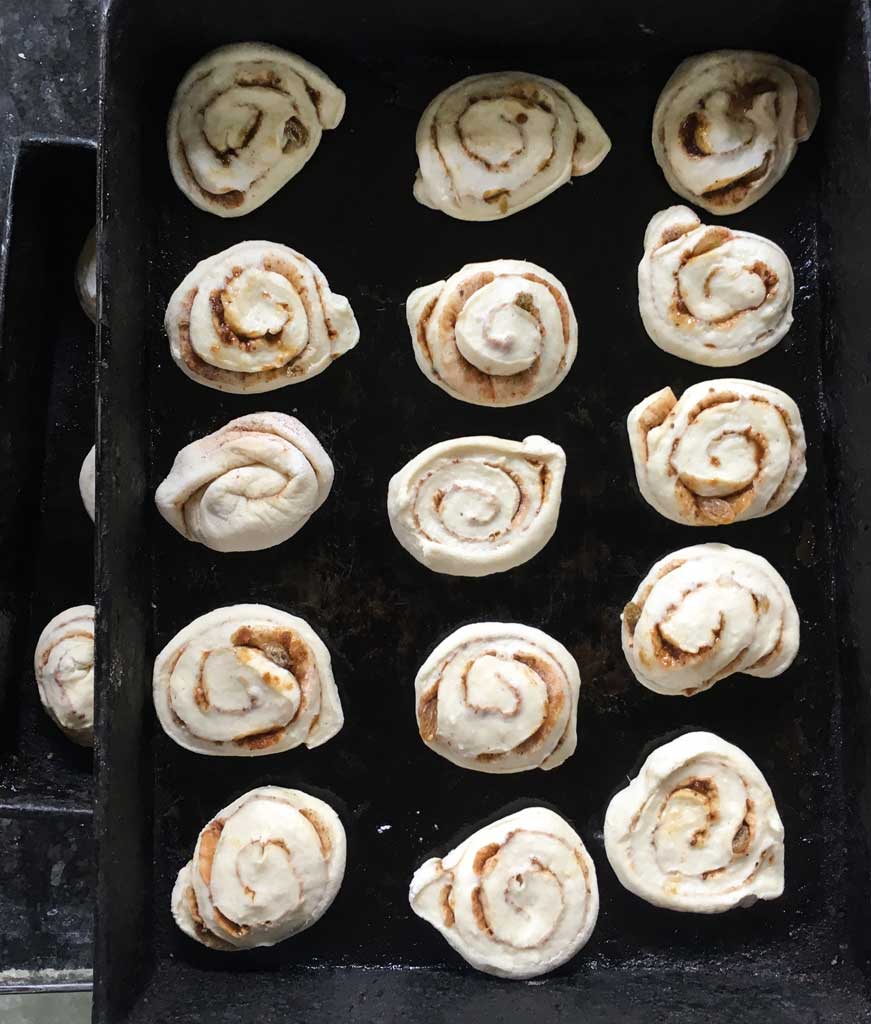
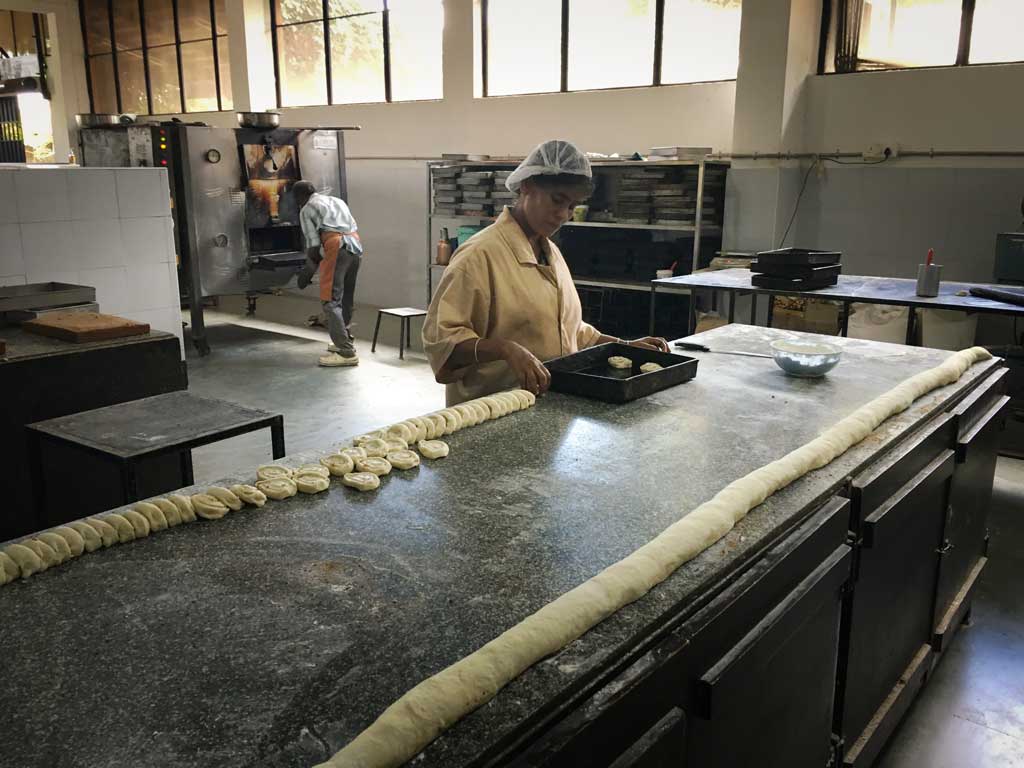
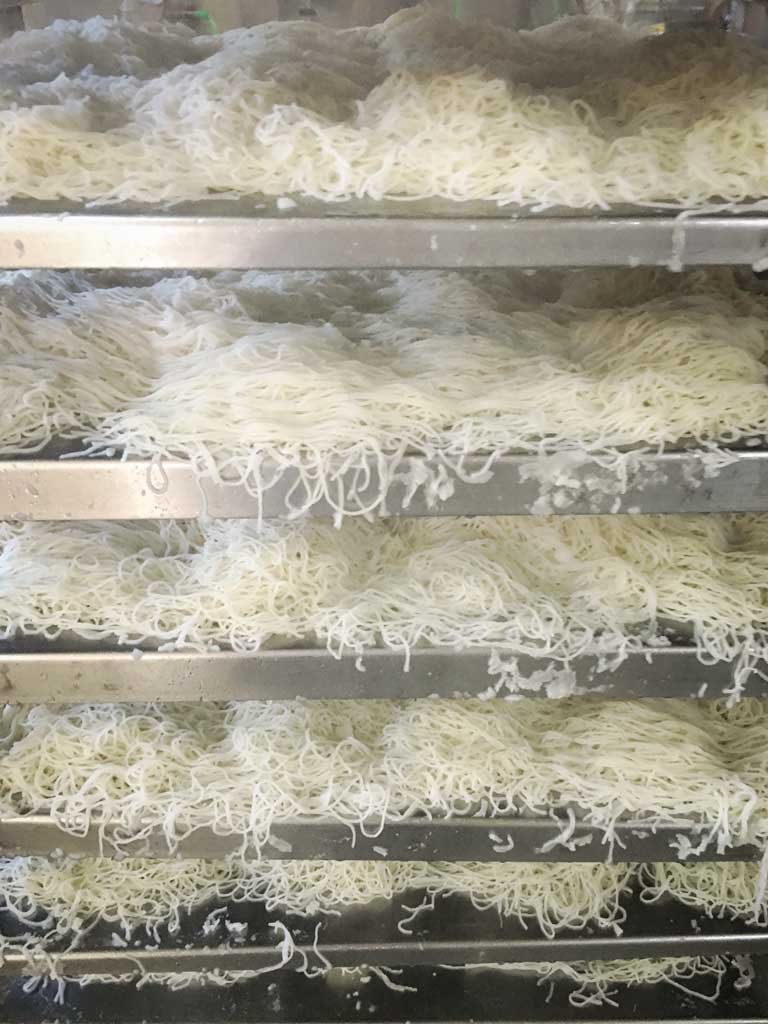
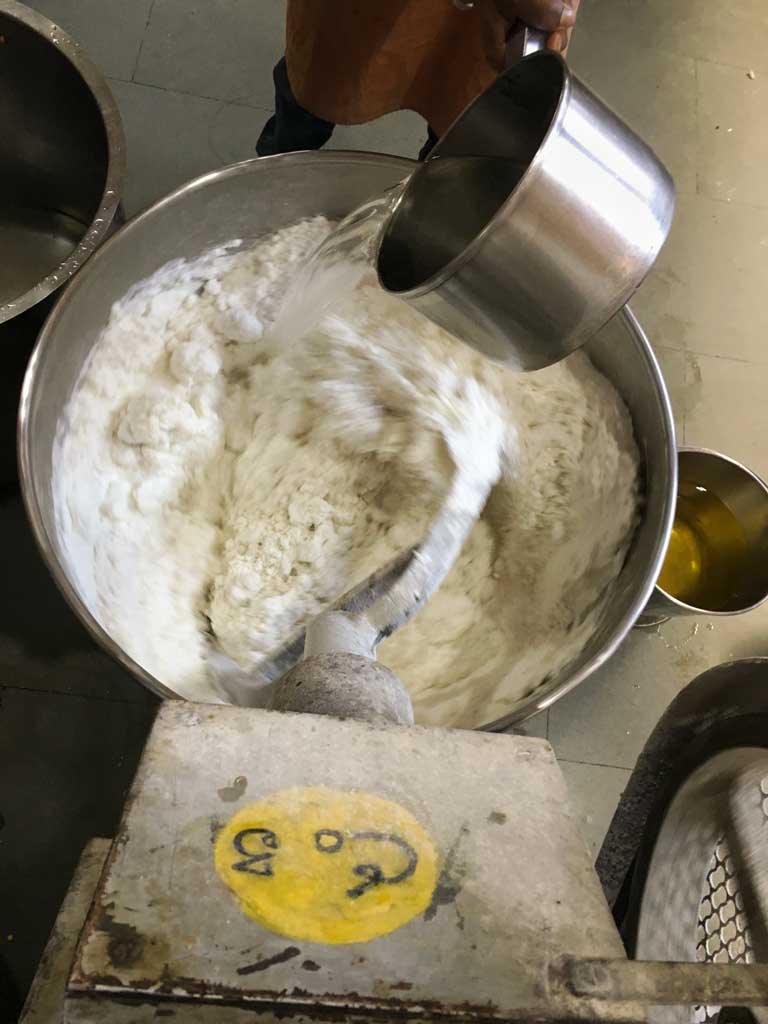
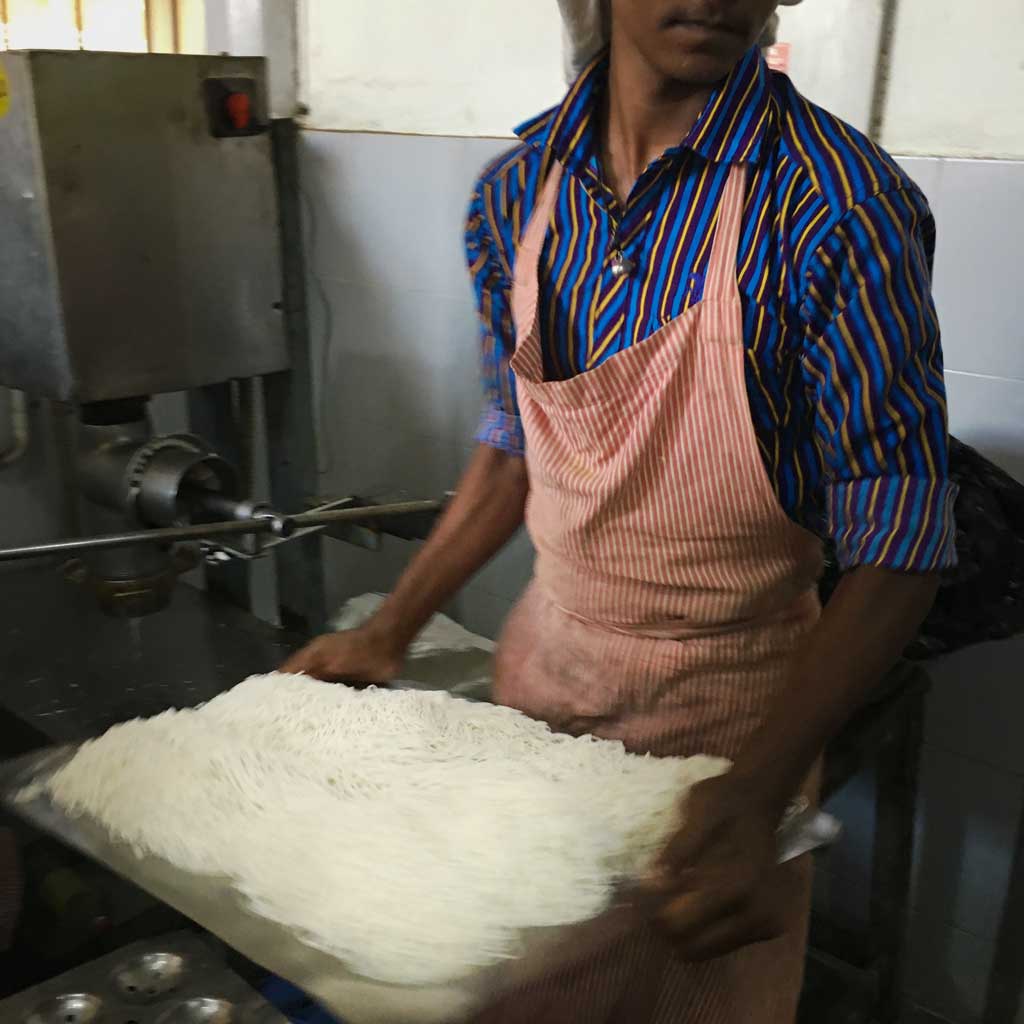
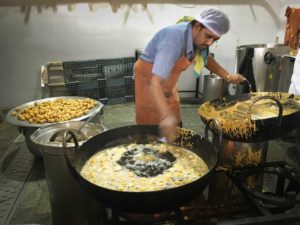
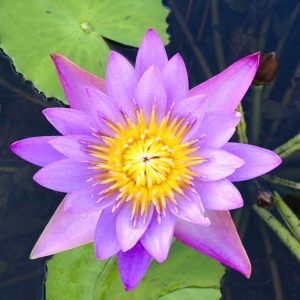
Thank you for the beautifully written article. I would really appreciate being put in touch with someone who has come from the West and moved to the Coimbatore Ashram, to learn what daily life, living arrangements, daily sadhana program, etc. is like first hand. I am inquiring not for idle curiousity but to help me make a decision for my life.
Namaskaram, I will connect you directly via email with a friend that spent 6 months at the ashram in Coimbatore. With kindness, Karen
i want to visit ashama, can you tell how to visit
Namaskaram Bhanu Priya,
Thank you for noticing our writing about Isha. Here is a link to how to visit Isha Yoga Centre.
We sincerely hope your wish comes true.
With love and blessings,
Karen and Pauli-Ann
HI, can you guide me about the courses i can do at Isha centre Chennai
Namaskaram Rupan,
Due to Covid health restrictions, we are unable to give you any information about in-person programs in Chennai right now. However, we can highly recommend the Online Inner Engineering courses. You can check them out here.
Pranams,
Karen and Pauli-Ann
Hi
Is there any senior citizens facilities in ashramam like community for them to live there ?
Namaskaram Haritha,
We can’t say for sure but we believe Sadhguru is making plans for that. And, there are lots of housing opportunities both in Coimbatore in Tamil Nadu and at the ashram in Tenessee, USA.
Please check with the Isha Foundation and best wishes on this insightful endeavour.
Kindly,
Karen and Pauli-Ann
I want to join as soon as possible
I want to join Isha for inner peace course and donate my rest of life to Isha as I lost my family in COVID. I was in depression but some guide me to join Isha bcos I want the aim of life. Then I listen guruji lectures and get inspiration.
Dearest Vasudha,
Please accept our sincere condolences for your loss. There could be no greater way to honour your family’s loss of life then to devote your own to living life to the fullest.
Blessings to you on your path. Sadhguru and Isha will guide you from here.
Pranam,
Karen and Pauli-Ann
I want to visit Isha for inner peace. Can you tell me the procedure.
Hello Sneha,
Just go to the Isha Coimbatore website and sign up for one of their programs. Inner Engineering is a great place to start.
With blessings,
Karen and Pauli-Ann